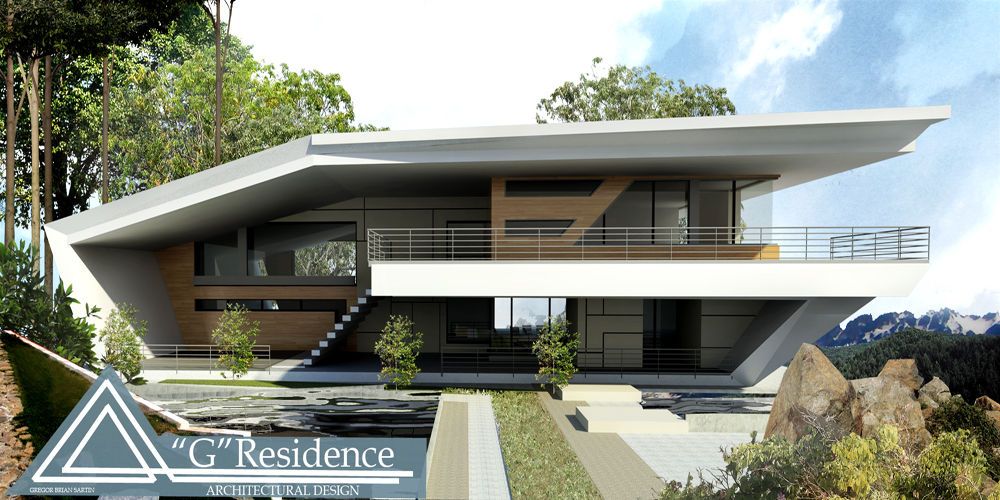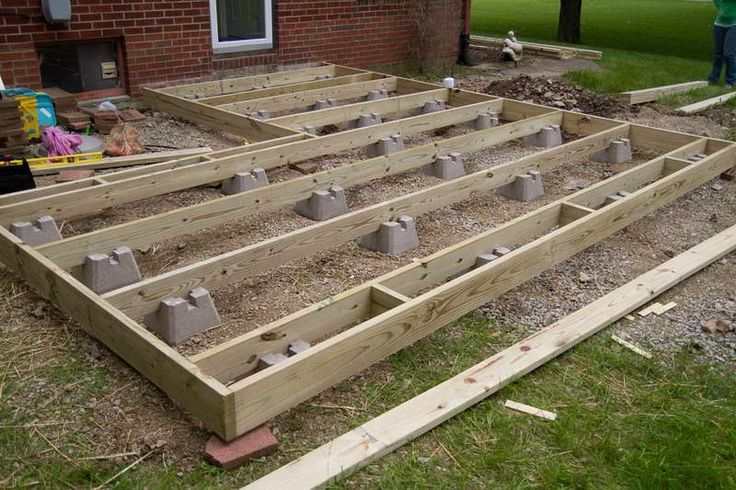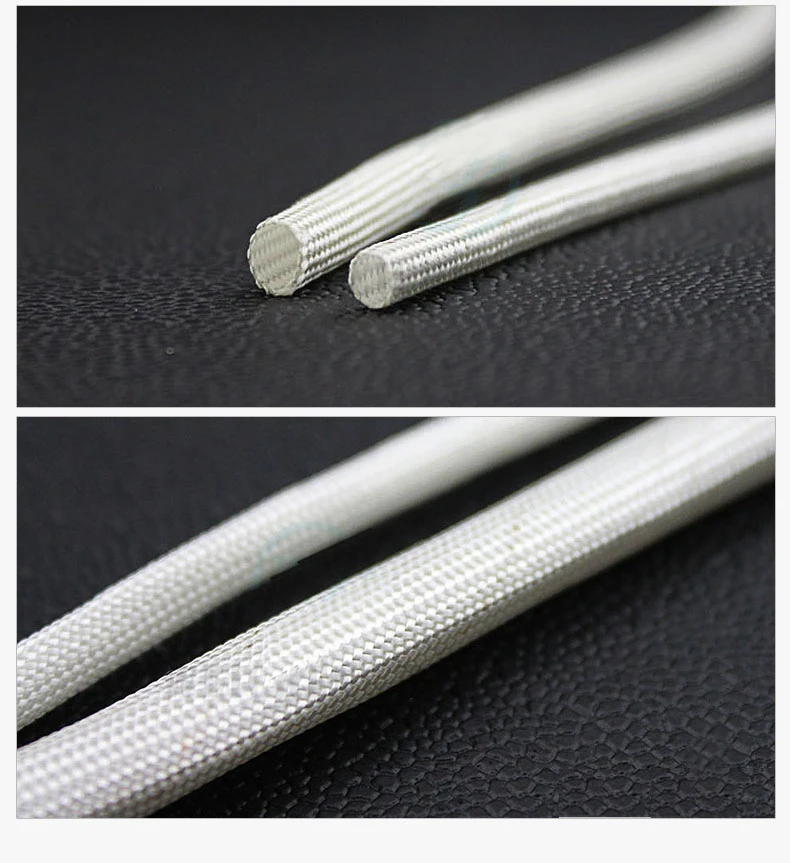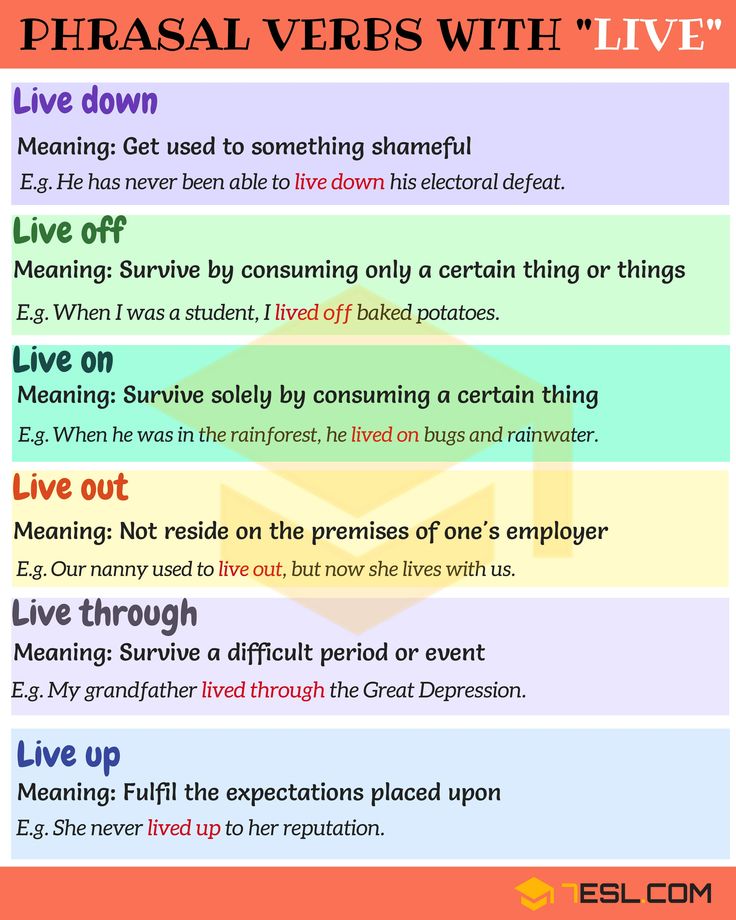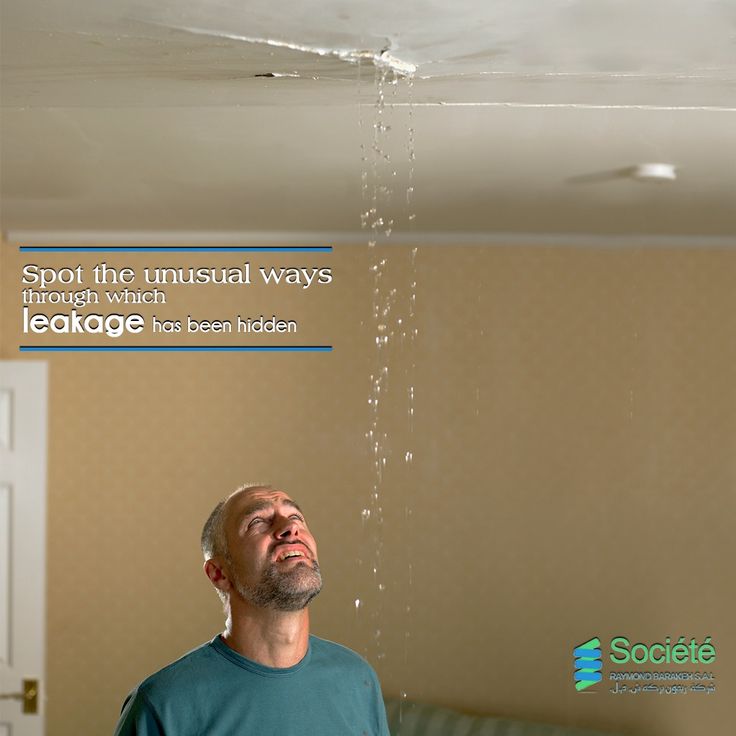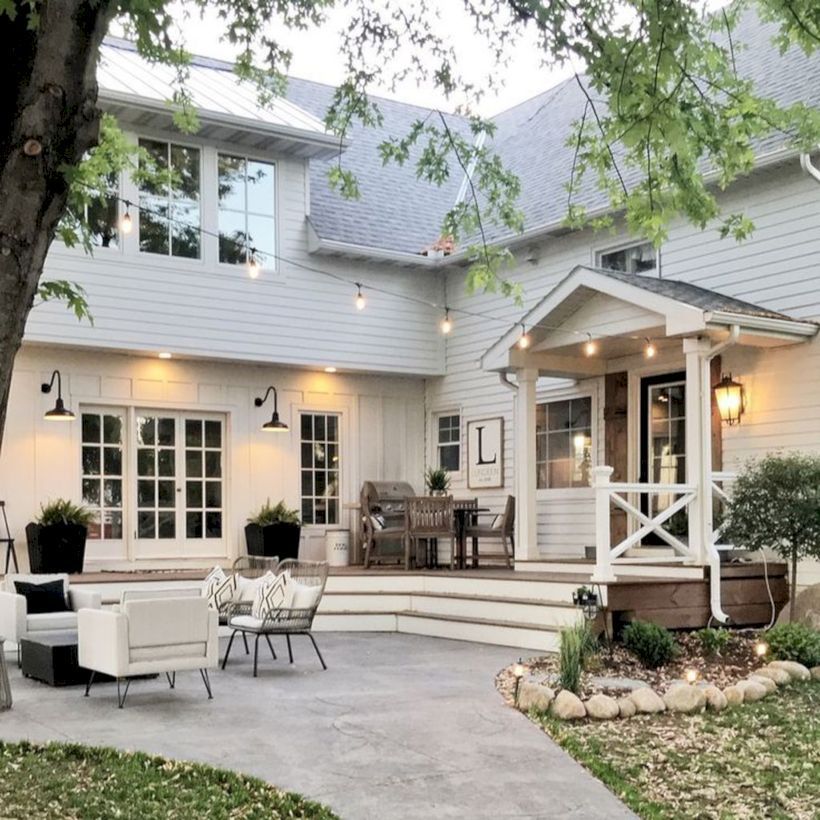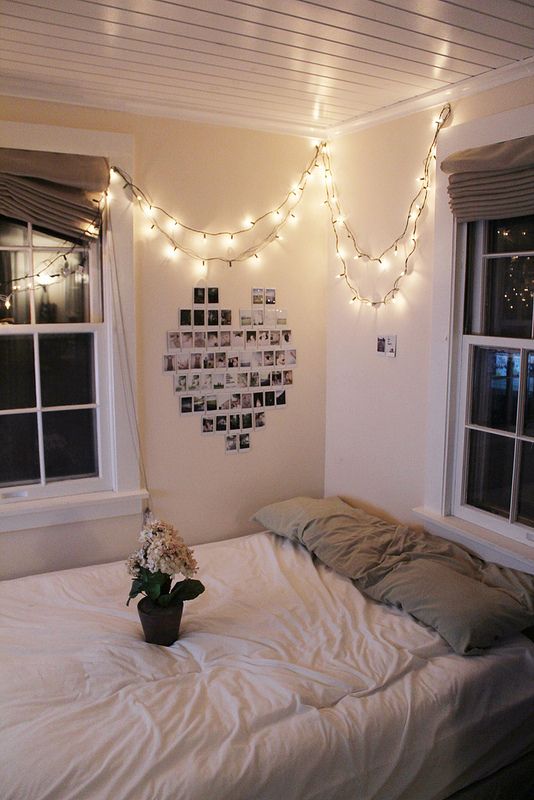Future house ideas
House Designs of the Future, 10 Amazing Futuristic Design Ideas
Futuristic homes look stunning and unusual, reflecting interesting new trends in contemporary house design for the future. Futuristic homes demonstrate various exciting shapes, challenging traditional rectangular houses with four walls, roofs with chimneys, garages, porches, and front lawns, and bringing eco-friendly technology and solutions for pleasant and comfortable green living.
According to urban architecture experts, contemporary house designs in the future will reflect many factors, including climate changes, population growth, an increase of the traffic in large cities, development of new building materials, and advanced computer technology, offering stunning residential spaces for comfortable living in the future.
Tornado-proof, Kevlar-coated modern house would be pulled into the ground when high-velocity winds pass by, offering a safe shelter for people. The high-tech open roof structures lock so water and wind could not get inside the house. A futuristic tornado-proof house design is developed by Ted Givens, an architect with 10Design, based in Hong Kong.
Urban sustainable architecture, floating Arcology design concept
Creacasa houseboat concept by Tom Pears, floating houses of the future
Floating platform Recreational Island, floating homes of the future
Futuristic architectural designs
Tornado-proof house design ideaAnother futuristic house design project gives a new meaning to residential spaces, offering a flying house. The Wolke 7 is conceived by Switzerland-based designer Timon Sager who suspended the living spaces in the air with durable cables.
With multiple decks, a state-of-the-art entertainment center, and a luxury bedroom, the flying house design offers everything you could want, from contemporary comfort to striking views of the surroundings.
Flying house design for the futureThe heat of California was a consideration for Korean designer Christopher Daniel who came up with this roll-like futuristic house design concept.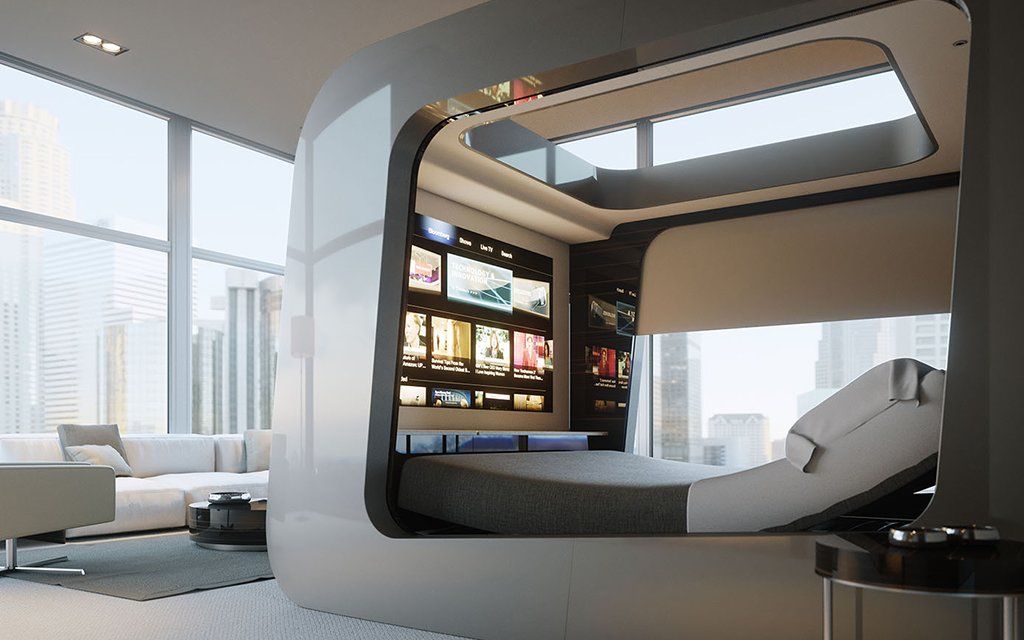 This home, developed for arid environments, is secured with a carbon fiber truss frame and has a hydraulic-powered automatic door.
This home, developed for arid environments, is secured with a carbon fiber truss frame and has a hydraulic-powered automatic door.
The upper half of the door opens overhead, and the lower part unfolds onto the ground. Curtains and bookshelves act as room dividers. Depending on the amount of sun, residents can make skylights and windows less or more transparent.
Futuristic house design for hot temperaturesUrban Tree House design concept is interesting also. Population growth and consequent crowding can leave little space to live in big cities. Jason Lubutkah of Jason David Designs in New York City came up with an innovative and fantastic way to deal with this problem.
Building futuristic houses that cantilever across city streets would use up all available space that otherwise is wasted. These homes are supposed to be constructed off-site and then raised to their new location.
Cantilever small house designInspired by children’s loom toy, Weave House features a woven facade and striking look. This mixed-use eco-friendly building is designed for passive energy use and pleasant green living. Prefabricated units lock together to form attractive and comfortable apartments. The overhang of each unit provides shade.
This mixed-use eco-friendly building is designed for passive energy use and pleasant green living. Prefabricated units lock together to form attractive and comfortable apartments. The overhang of each unit provides shade.
Easy and very quick to build, the structure arrives from a factory in many small parts. Once on-site, the pieces are hoisted into place. The prefabricated house design concept was designed by Meridian105 Architects of Denver, Colorado.
Futuristic energy-efficient apartment building designFallingwater cottages are an unusual house design concept that looks like hills with attractive entryways into the slopes. Patkau Architects in Vancouver, Canada, developed these futuristic underground dwellings. These homes perfectly blend with the landscape and provide a minimal footprint approach to living while offering essential comfort and a fantastic experience.
Futuristic underground housesDesigned by Royal Haskoning Architechten in Nijmegen, Netherlands, Moon Villa is a transparent house design concept, perfect for lunar living.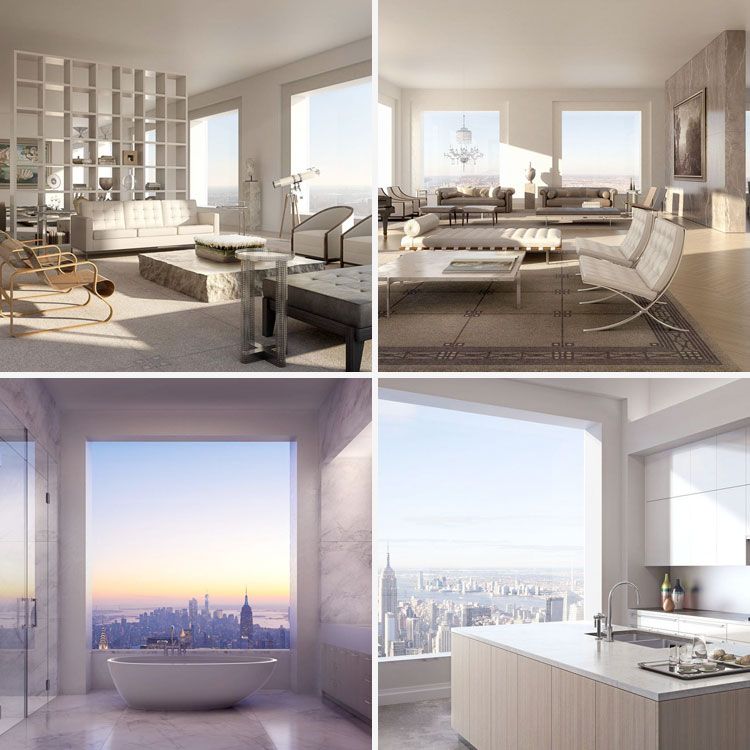 It has no stairs since the low gravity on the Moon would allow residents to float from one level to the next. The futuristic house has enormous rotating shades that protect interiors from the extreme temperatures of outer space. An underground bunker is also included in the house design, just in case of a dangerous solar storm.
It has no stairs since the low gravity on the Moon would allow residents to float from one level to the next. The futuristic house has enormous rotating shades that protect interiors from the extreme temperatures of outer space. An underground bunker is also included in the house design, just in case of a dangerous solar storm.
Designed by Victor Vetterlein from New York City, Reboot Home is a computer-controlled futuristic house design concept developed to maximize energy efficiency and comfort. Every exterior surface acts as a solar energy collector. This futuristic home design features a wind-powered elevator, water-treatment plant, and rooftop tanks for rainwater collection. Natural airflow is provided via vents.
Futuristic computer-controlled homeLiving in cities is rarely a green experience, but San Francisco-based designer Joanna Borek-Clement has come up with a sky-scraping solution Sky Terra Towers. The neuron cell-like towers would reach elevations of 1,600-feet and would be inter-dependent.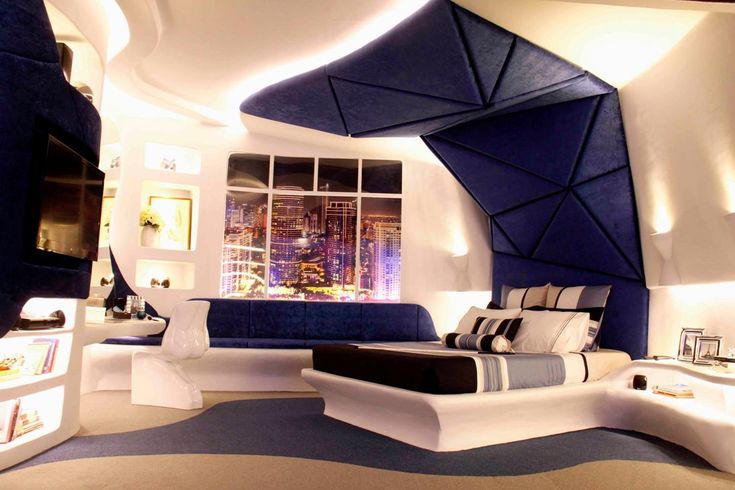 Each tower structure supports the others. People would reach the amphitheaters, pools, fields, and parks via elevators from the street, reflecting the futuristic design concept with Tokyo in mind.
Each tower structure supports the others. People would reach the amphitheaters, pools, fields, and parks via elevators from the street, reflecting the futuristic design concept with Tokyo in mind.
Water Discus Hotel is an exciting contemporary design concept by Deep Ocean Technology, located in Poland. An underwater area would allow a guest to look out the hotel window at a school of fish, creating unforgettable memories.
Futuristic hotel with underwater structureThe 11,000 square foot space would sit 33 feet below the surface of the water. Additional contemporary design features include a diving center, open terraces above water, and a spa. For safety, the disc-shaped dwellings could be detached from the main structure and used as super comfortable lifeboats.
by Ena Russ
02.09.2021
These Are the Homes of the Future
US Markets Loading... H M S In the news
Chevron iconIt indicates an expandable section or menu, or sometimes previous / next navigation options. HOMEPAGE
HOMEPAGE Tech News
Save Article IconA bookmarkShare iconAn curved arrow pointing right.Download the app
The traditional suburban home with a wraparound porch still exists, and maybe always will, but it won't be the standard housing option in the future.
Photo Courtesy of Vincent CallebautAs cities grow and lifestyles change, the homes we decide to live in will change as well. In fact, we are already starting to see unique housing alternatives.
Here's a look at the homes of the future:
We're already starting to see many options for tiny homes, like the Ecocapsule that is meant to support you living entirely off the grid.
 Nice Architects
Nice Architects It is solar- and wind-powered, but if both options fail there's a battery that will allow the pod to run for three to four days.
The ecocapsule, which costs $87,000, has a unique egg shape to minimize heat loss and capture rain water that is filtered in a water tank.
EcocapsuleKeep in mind shipping can cost as much as $3,890 depending on where you are.
But if that's too small for your liking, you can try the ALPOD — a small mobile home made out of aluminum.
AluhouseIt has a skylight and sliding doors to provide natural air.
A bathroom and kitchen are pre-installed, but the rest of the space can be divided in whatever way you want.
AluhouseIt'll be available for purchase in 2016.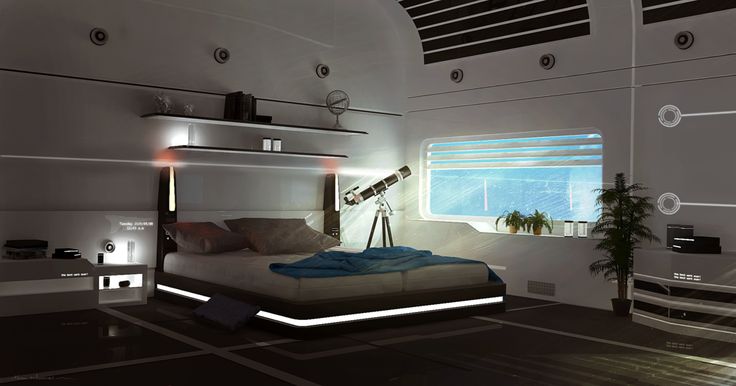
Solar panels are installed on some homes to provide electricity and power the electric toilet.
Courtesy of GetawayYou can rent the tiny houses in Massachusetts for $99 a night.
Modular homes are only going to become more popular.
Rob LudacerAbove you see a prototype of such a home that was designed by French architecture firm Multipod Studio.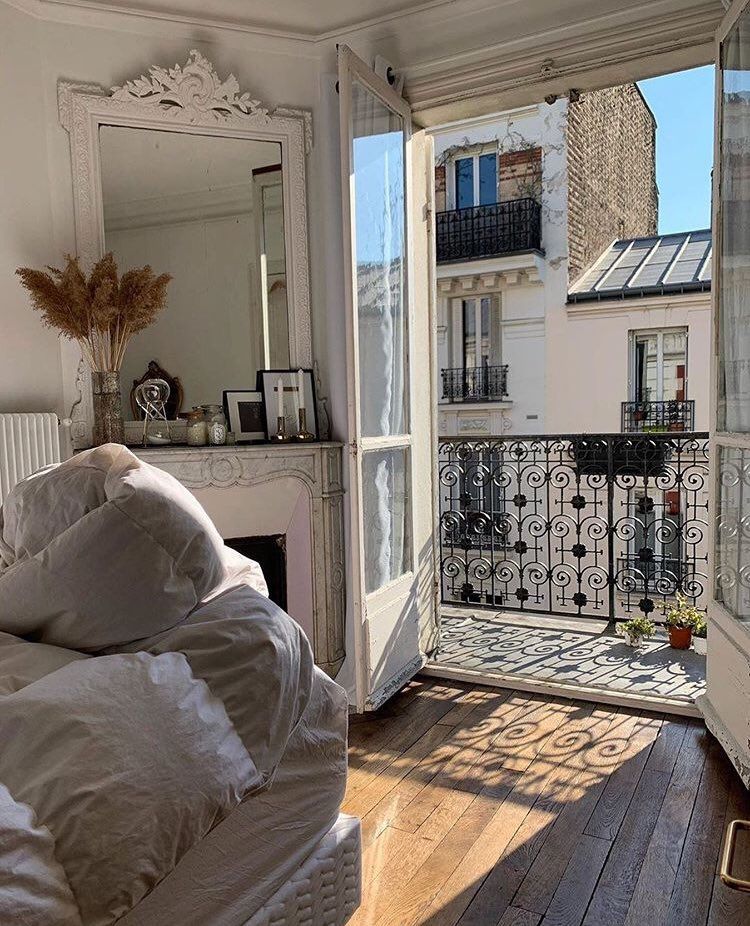
But not everyone will live in actual homes. We're already starting to see more people electing to live in microapartments.
AP/Julie JacobsonNew York City's first microapartments will be available for leasing in November. Located in Kips Bay, the Carmel Place apartments measure under 370 square feet.
The Carmel Place apartments utilize space fairly efficiently and come with a kitchen, a desk that turns into a 10-seat dining table, and a bed that turns into a sofa.
AP/Julie JacobsonMicroapartment living can certainly be tough.
 Lee Jae Won/Reuters
Lee Jae Won/Reuters As buildings get taller, your entire living experience might actually take place in a building, according to futurist Ian Pearson, a fellow at the World Academy for Arts and Science.
Flickr/Taylor HerringBoth Pearson and a report released by Samsung called the SmartThings Future of Living Report think advancements in the way we do construction and the building materials we use will result in taller buildings.
Pearson said this could result in buildings becoming their own mini cities.
"We might have... thousands of people living in a single building as a self-contained city," Pearson told Tech Insider.
Andy ScalesBut if heights aren't your thing, you could live underground.
BUNKER ARQUITECTURAThe Samsung report envisions people will live in subterranean structures called Earth Scrapers in 100 years.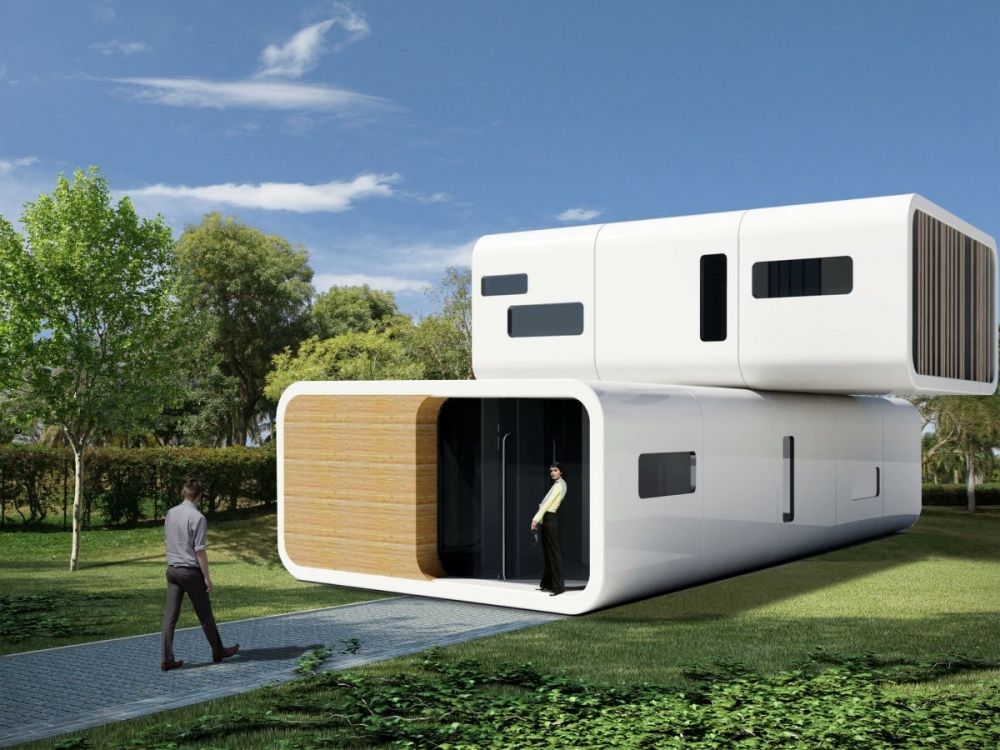
There's actually a planned Earthscraper for Mexico City, which would be an upside-down, 65-story pyramid. But we haven't heard anything about the project since the schematics were released in 2011.
There could even be underwater cities.
Flickr/Taylor HerringThe Samsung report envisions there will be aquatic communities in 100 years that will be powered by the waves and solar.
You could potentially even live in a floating city.
Rob LudacerThis floating city concept, called Aequorea, would house 20,000 residents and be built using garbage.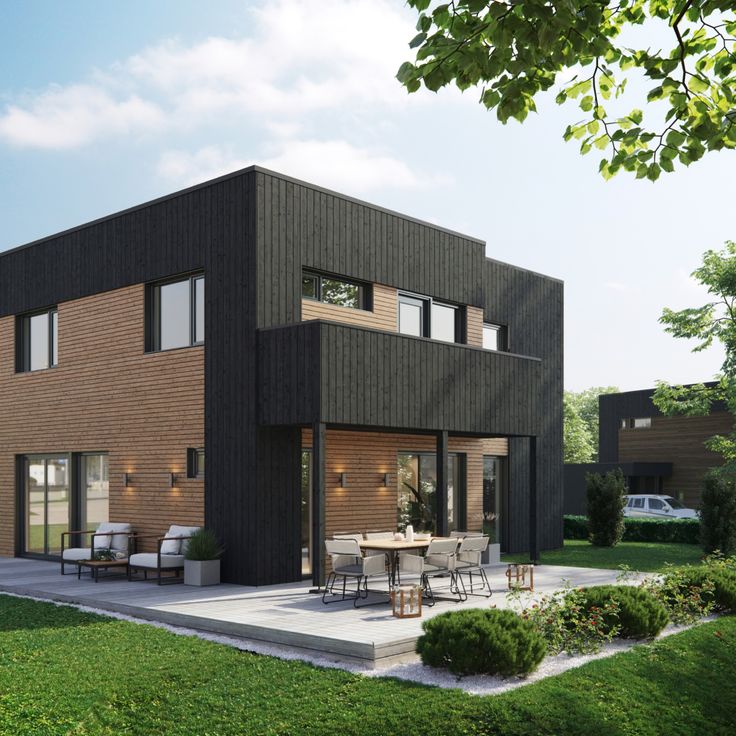
Aequorea is still in concept phase, but it provides a glimpse of how people are thinking of the future of homes.
Rob LudacerYou can learn more about how the concept could be made here.
Perhaps even space colonies are not too far off.
Flickr/Taylor HerringThe Samsung report predicts space communities could emerge as asteroid mining becomes a viable commercial enterprise.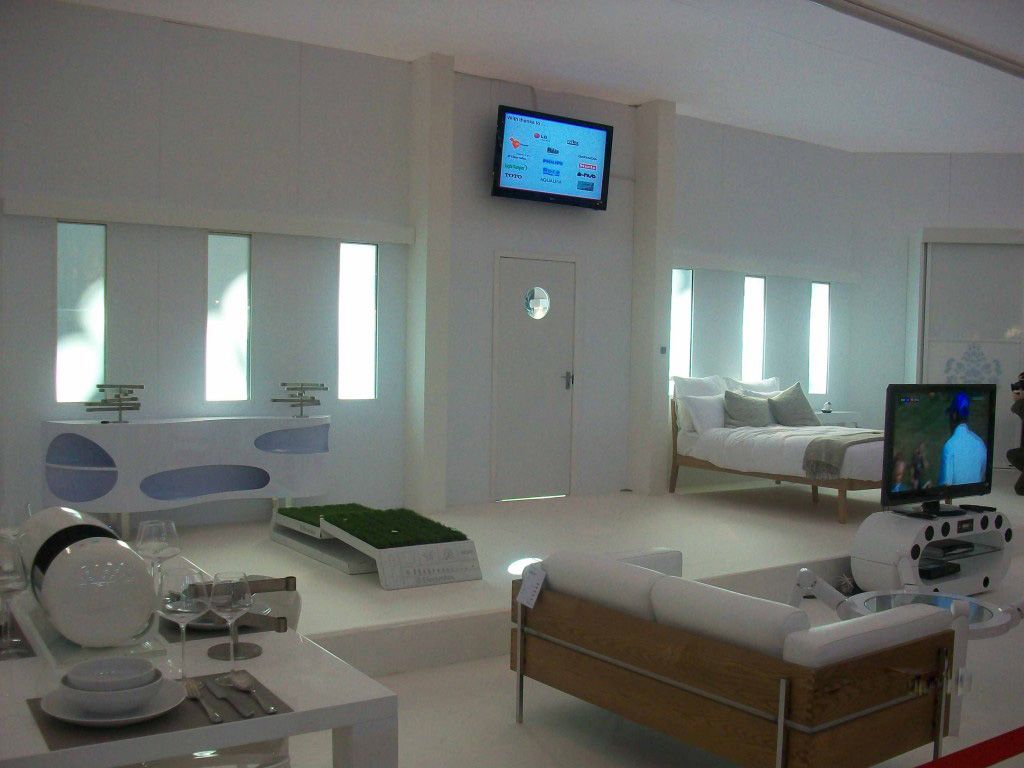
There's no telling if all these concepts for future homes will play out, but one thing is for sure: how we live is bound to change.
Andy ScalesRead next
LoadingSomething is loading.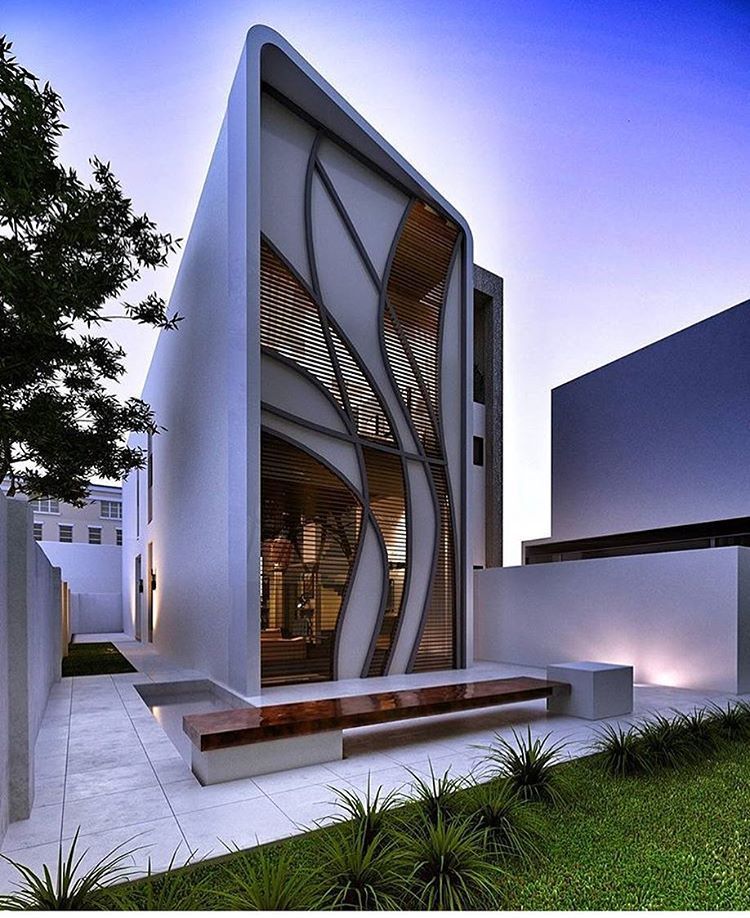
Thanks for signing up!
Access your favorite topics in a personalized feed while you're on the go.
Features Future Home14 new age ideas - Roomble.com
2019-03-05T10:30:42+00:00 2019-03-05T00:53:41+00:00 House of the Future: 14 Ideas for a New Age 2019-03-05T10:30:42+00:00 Today, many people talk about smart home. But this is far from the limit of dreams and possibilities, because the farther, the more perfect systems will appear.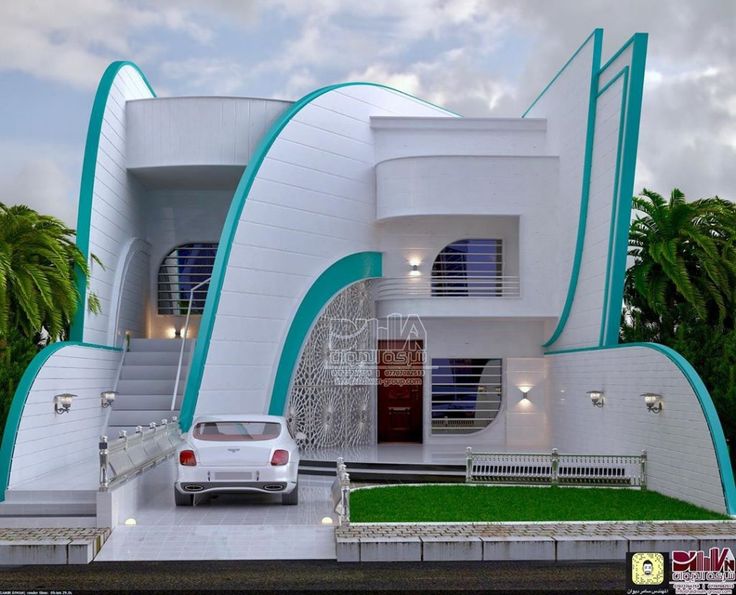 Let's take a closer look at the technological equipment and advantages of the houses of the future House of the Future: 14 Ideas for a New Age
Let's take a closer look at the technological equipment and advantages of the houses of the future House of the Future: 14 Ideas for a New Age
Today, many people talk about smart home. But this is far from the limit of dreams and possibilities, because the farther, the more perfect systems will appear. Let's take a closer look at the technological equipment and advantages of the houses of the future
Back in the 20th century, such an invention could not even be thought of, but in the 21st century the house of the future seems more than real. And this is not a mansion, distinguished by unusual shapes and sizes, but first of all a multifunctional house with a properly distributed energy consumption.
Artificial intelligence, which is equipped with a smart home, allows various devices to interact and work without the presence of a person. Control of light, heating, electrical appliances and other systems will become completely remote.
The house of the future will be completely autonomous.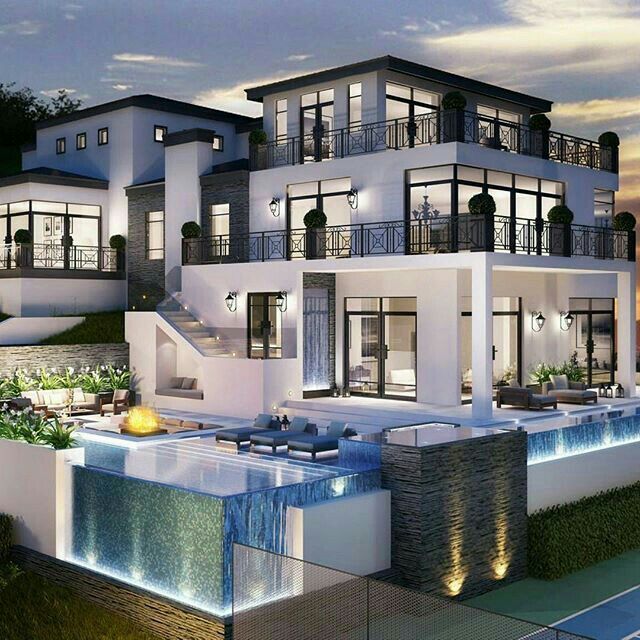 Since the fuel reserves on earth are limited, the work of the smart home will be based mainly on the use of renewable sources. For example, electricity will begin to accumulate energy from the sun or wind. The use of natural gas and oil will cease due to the unenvironmental nature and rapid depletion of these non-renewable resources.
Since the fuel reserves on earth are limited, the work of the smart home will be based mainly on the use of renewable sources. For example, electricity will begin to accumulate energy from the sun or wind. The use of natural gas and oil will cease due to the unenvironmental nature and rapid depletion of these non-renewable resources.
When creating a house, manufacturers will use the latest information technologies, thanks to which the entire system of the house will be controlled using a computer or gadgets. It is also possible to remotely control the system and all devices from a smartphone from anywhere in the world.
The system installed in the house of the future is capable of recognizing gestures, detecting body movements and distinguishing commands, including voice ones. The system interface responds to such basic commands as “turn on the light”, “turn on the TV”, “lower the blinds”, “fold the sofa”.
In addition to gesture recognition, the Home of the Future system can report the weather, notify you of upcoming events, and simply keep a conversation going when needed.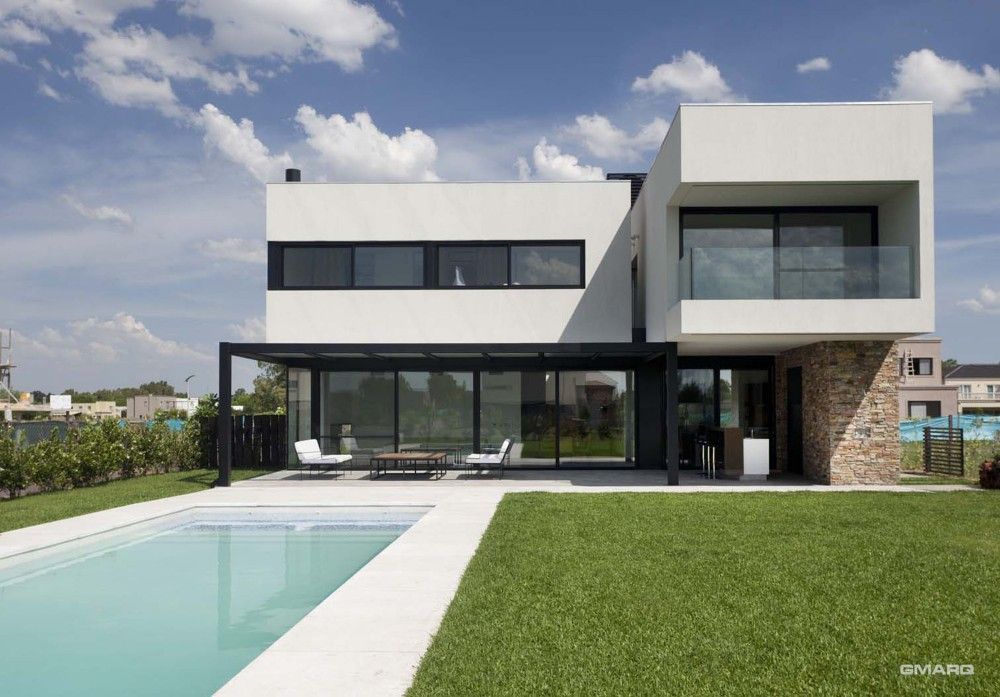 One such smart home system is known as Cleopatra.
One such smart home system is known as Cleopatra.
In the house of the future, all surfaces will be made from smart materials. For example, walls can keep Wi-Fi within the premises, preventing it from being hacked and stolen. Windows can simultaneously be large transparent screens, for example, for watching movies. The smart floor will be able to recognize people by weight, turn into a playground for football, hockey and other games.
These functions can really be built into the design of a smart home - they help create a comfortable temperature throughout the room and at the same time protect it from overheating and moisture. In the house of the future, the system can also adapt to the rhythm of the owner's life: reduce the intensity of heating in the absence of a person in the room and increase floor heating when he arrives.
Smart home appliances can differ from the usual ones in that, for example, a tablet will be built into the refrigerator - it will be possible to listen to music and search for recipes.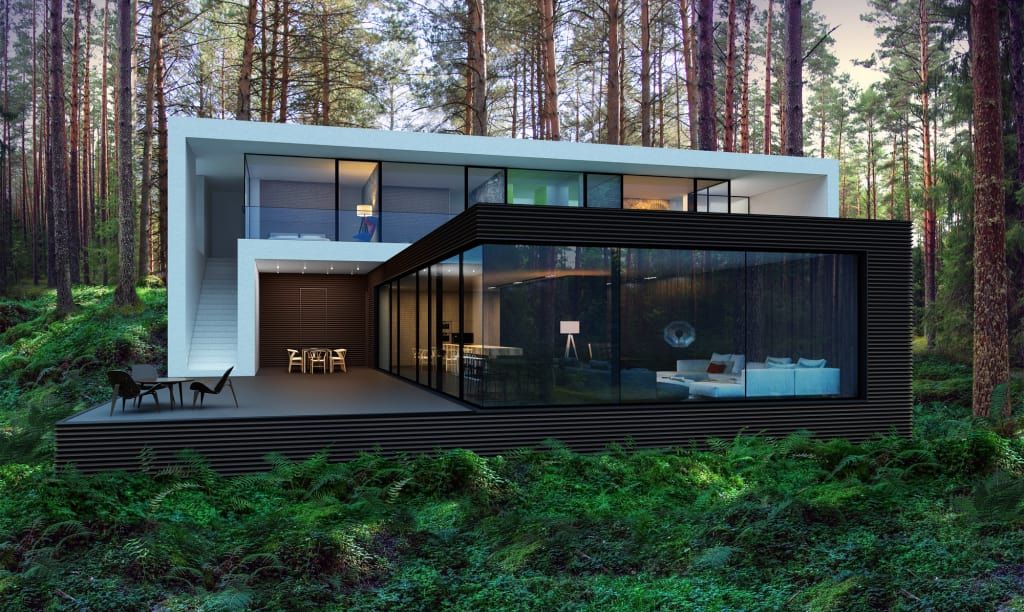
A robot vacuum cleaner has long been an indispensable assistant, which cleans the apartment from dust in a timely manner and works without human intervention. Over time, more and more devices will be able to work independently, without human intervention.
In the house of the future it is possible to install automatic blinds. They will help to avoid overheating of the room by the sun's rays, which is why you often have to use the air conditioner. Intelligent blinds and roller shutters protect your home from heat and save energy. They can also adjust the level of lighting.
Unlike conventional incandescent lamps, LED lamps do not get hot and have a much longer service life. They can be placed in any convenient place throughout the smart home, properly distributing lighting and not wasting extra energy.
This is not just an air conditioner that consumes a lot of electricity when running intensively. An automatic air conditioner is able to measure the radiation of each of the sections of houses in the infrared range and, based on this data, independently direct cold air jets to the most heated areas.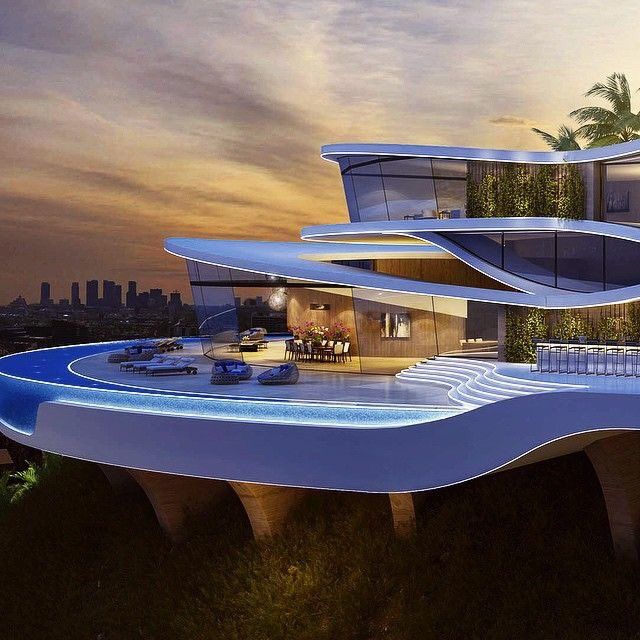
A heat exchanger is built into the ventilation system of the house of the future, that is, a device capable of transferring heat from the exhaust air to a new flow of air masses that the fan sucks in from the street. Such a device significantly reduces the energy consumption for heating the air and cooling it.
In the house of the future, even the toilet will be very different from the usual one. In addition to performing the main function, it will be able to check your tests and warn you about the presence of an infection or illness.
In the improved bathroom of a smart home, the owner will be able not only to take a bath - he will be able to immerse himself in another reality, displaying any object, such as the sea or the jungle, on the built-in spherical screen.
Bathtub with a computer system and special virtual reality glasses will help to make ordinary images broadcast from the screen three-dimensional. The effect of immersion in another reality will be complemented by the appropriate soundtrack.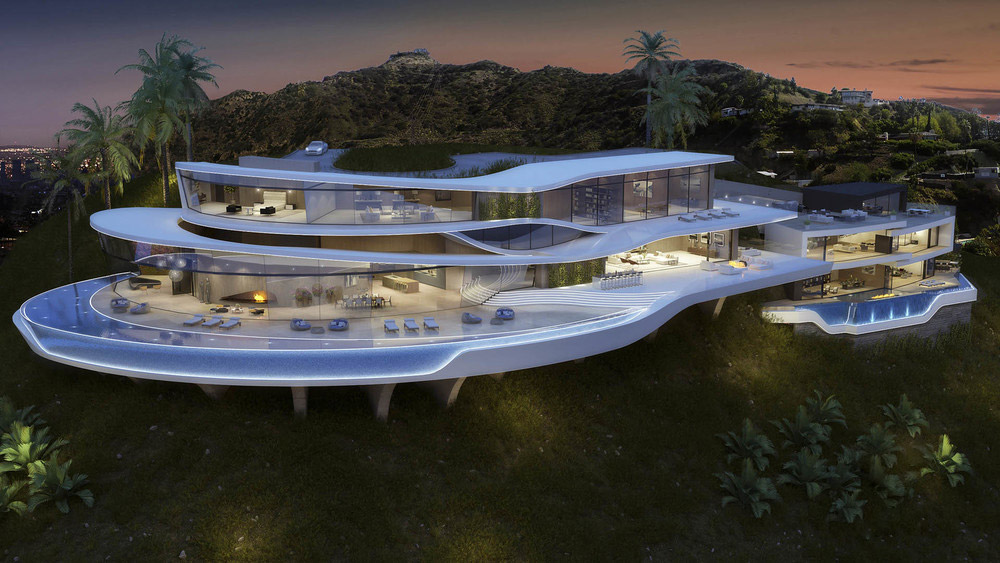
All furniture in the house of the future is multifunctional: the smart home system can turn a compact sofa into a spacious bed in one minute, reduce the dining table to the size of a coffee table, expand the wardrobe if necessary by pulling out hidden shelves where clothes are stored.
Share:
Rate the article:
Thank you for your rating! Want to leave a comment?
no send
Thank you for your vote.
Follow us:
Follow us on Facebook
Follow us on Vkontakte
10 craziest house projects of the future
We often think about what technologies will be in the future. Of particular interest are technologies for the home, as this is where we spend most of our time. Sometimes we ask: “why are these technologies still not there?”. Often great ideas are ahead of their time. Companies can't keep up with production, production becomes too expensive - there are many reasons why some things become impractical and sink into oblivion.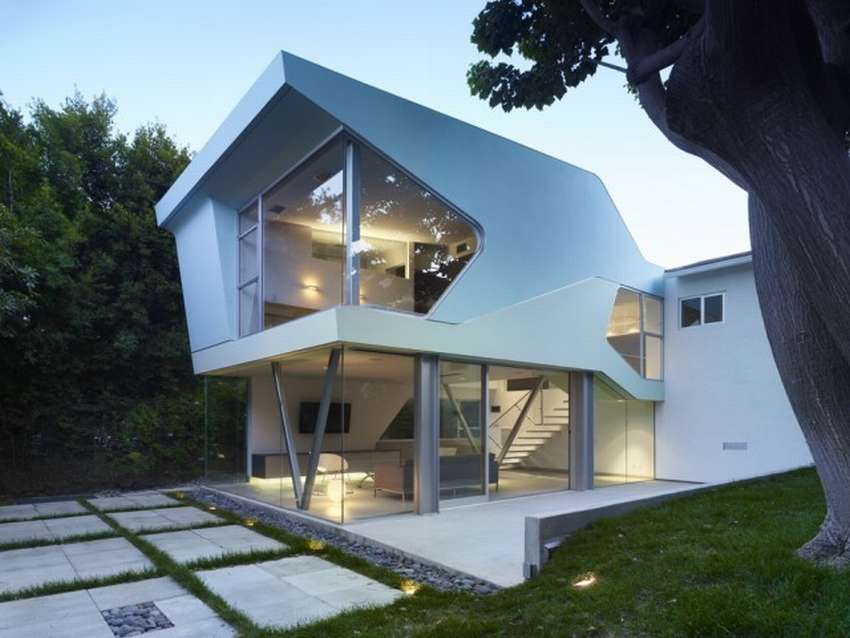
Searching for future innovations on the Internet showcases a collection of beautiful videos, often created by companies or sponsors. Many features are well known to us, but still, concepts remain concepts, ideas remain ideas, and never come to life. In the world of the atomic age after World War II, everything seemed possible. There were always people who created something that they called "the next breakthrough." Let's go over some of the innovations for the homes of the future that... are not.
Content
- 1 Submarine cities
- 2 Home nuclear reactor
- 3 Biosphere
- 4 Lunar colony
- 5 Flying houses
- 6 Plastic house
- 7 buttons, buttons, buttons, button
- 8 cosmic
- Videophones
- 10 Domestic robots
Underwater cities
Around the time NASA first started thinking about how to put a man on the moon, we began to think about how to colonize our own planet.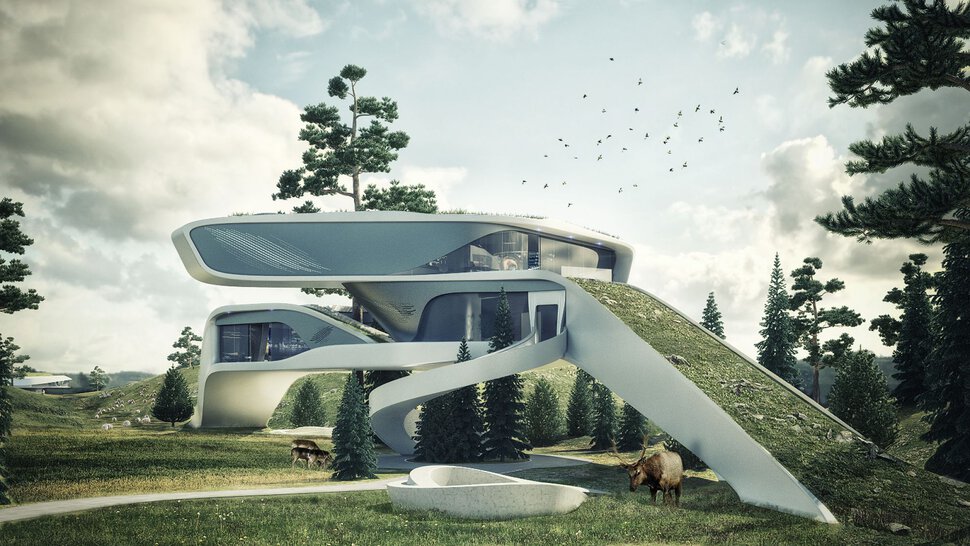 As you know, conditions even on Earth in the depths of the ocean are sometimes not very different from the exotic environment on a potentially habitable planet. Thus, having found out whether it is convenient to live, for example, at the bottom of the sea, we could better prepare for moving to the same Mars.
As you know, conditions even on Earth in the depths of the ocean are sometimes not very different from the exotic environment on a potentially habitable planet. Thus, having found out whether it is convenient to live, for example, at the bottom of the sea, we could better prepare for moving to the same Mars.
The US government is involved in the development of underwater stations. The US Navy first created SEALAB, an experimental underwater dwelling, in 1964 and submerged it to a depth of 58 meters. It was followed by SEALAB II and III. And in the late 60s, the Tektite research underwater station was built (development by General Electric with money from NASA and the State Department).
There were also fully commercial private projects. The well-known explorer of the deep sea, Jacques-Yves Cousteau, built the Conshelf underwater house in the mid-60s, the maximum diving depth of which was 102 meters. But do not feed innovators with bread - they want to make an underwater permanent residence. At World's Fair 1964 years in New York, General Motors introduced an entire underwater hotel called Futurama II. Unless Dr. Zoidberg is not a supply manager.
At World's Fair 1964 years in New York, General Motors introduced an entire underwater hotel called Futurama II. Unless Dr. Zoidberg is not a supply manager.
And now the most interesting part. In 1971, a group of British investors created a project plan, according to which they were to build an entire underwater city ... in the Black Sea. Welcome to Pilkington Sea City.
Some research centers operate completely underwater, there are underwater hotels, but there are no cities. Why? One major concern is decompression sickness, a potentially deadly condition due to the fact that water puts twice as much pressure on our body as air does. Maintaining the right atmosphere, as well as logistics, including supplies, is difficult and expensive. Maybe that's why a night at the Jules' Undersea Lodge in Florida costs $500.
Home Nuclear Reactor
If you've been to Disneyland 1957-1967 (which is unlikely), you must have seen Monsanto's House of the Future.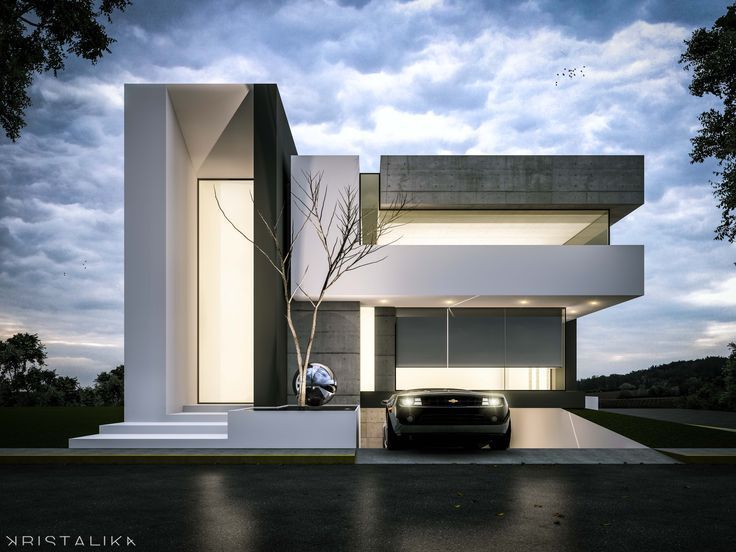 There were many amazing things inside, some of which are impossible to imagine even today, let alone see. As you explored this "home of the future", a voice followed you explaining how this or that thing works. Towards the end of the tour, the voice said the following:
There were many amazing things inside, some of which are impossible to imagine even today, let alone see. As you explored this "home of the future", a voice followed you explaining how this or that thing works. Towards the end of the tour, the voice said the following:
"In order to keep energy costs down, all of the house's electricity and central heating is powered by a small nuclear reactor shielded with plastic for safety."
Excuse me? Small nuclear reactor? After the Chernobyl accident in 1986, there were 50 more incidents around the world (not to mention nuclear ships and submarines). Since then, the "peaceful atom" has ceased to be harmless and friendly. Nobody wants to live next to a nuclear power plant, let alone hide it in the basement of their house. But then the "House of the Future" was the first commercial project of a domestic nuclear power plant. Then there was the atomic age, and everyone dreamed of the transport of the future, equipped with miniature nuclear power plants, and thought that nuclear power would send the antediluvian coal industry into retirement.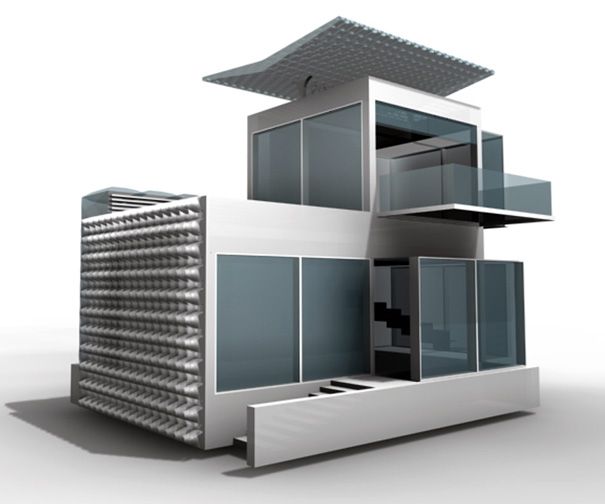 But it turned out that the path to inexhaustible energy is much more thorny, and plastic is not enough to protect against a nuclear explosion. Completely autonomous houses exist, but it is impossible to say that they are in the order of things.
But it turned out that the path to inexhaustible energy is much more thorny, and plastic is not enough to protect against a nuclear explosion. Completely autonomous houses exist, but it is impossible to say that they are in the order of things.
Nevertheless, NASA does not lose hope and is working to create a safe home nuclear fusion reactor.
Biospheres
In 1996 a film called "Bio-House" was released with Stephen Baldwin and Pauly Shore in the lead roles. They played characters who were looking for a mall and found themselves inside a bio-house. The bio-house - or biosphere - is a closed ecological system created by people. This means that all waste produced by organisms must be consumed by other organisms within the biosphere. The biosphere was created as part of an experiment simulating a closed system for survival in space. On a space station, for example, everything the astronauts and cosmonauts need is transported with them or later. But if we carry food to the Martian colony, it will be expensive and stupid. So, the space colony should be autonomous.
But if we carry food to the Martian colony, it will be expensive and stupid. So, the space colony should be autonomous.
The first biosphere was built in Russia in the mid-60s. She used chlorella algae to recycle the air that her inhabitants breathe. Also cultivated crops for food. BIOS-3 worked until 1984, and the longest autonomous period was 180 days. However, it has never been a completely closed system. Biosphere-2 (2 - because the original of the biosphere was the Earth), built in the USA in the late 80s, coped with two main missions and allowed several small experiments to be carried out.
During the second mission, the biosphere contained not only crops for food, but other plants as well as animals. The mission failed in September 1994 after 10 months of work. And the failure was truly epic. Animals died (although insects lived in clover), oxygen levels dropped, people were wildly hungry, and most interestingly, they fought among themselves and divided into factions.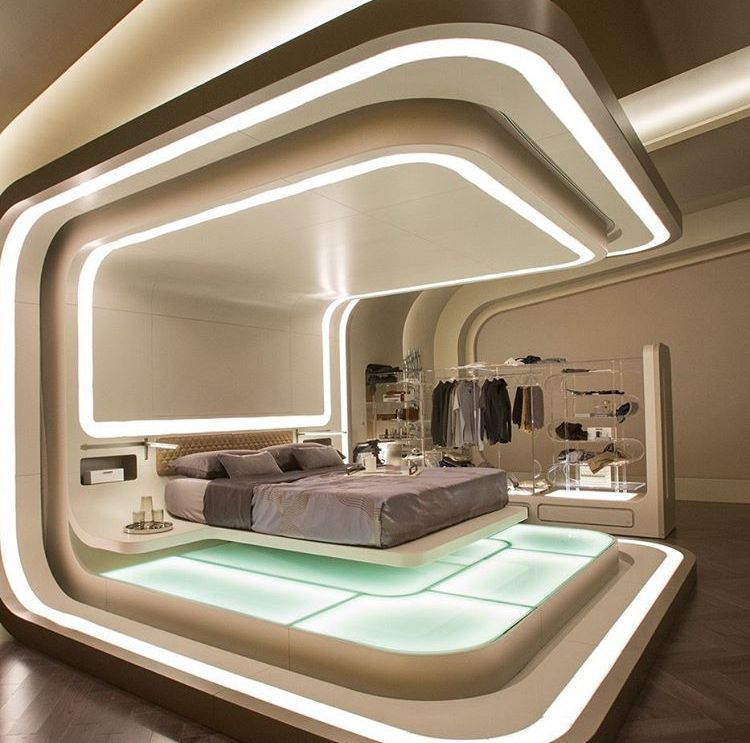 The psychological factor ruined everything. Biosphere-2 is considered by some to be a "happy failure". The mission was not completed, but we learned a lot along the way. On the other hand, no one will live in the biosphere in the near future.
The psychological factor ruined everything. Biosphere-2 is considered by some to be a "happy failure". The mission was not completed, but we learned a lot along the way. On the other hand, no one will live in the biosphere in the near future.
Lunar colony
In the space race between the Soviet Union and the United States, the latter had an important role to play: to be the first to land a man on the moon. President John F. Kennedy promised to send astronauts before 1961 to plant a flag on the lunar surface and bring them back. The whole world watched as Neil Armstrong took his first steps in low gravity, and it seemed so incredible that many still believe that the Americans did not land on the moon. Science fiction writers all over the world rushed to write books (although even before that Robert Heinlein did a good job) about how gloriously humanity will live on an earthly satellite. And although after that NASA sent people to the moon four times, interest in its development has irrevocably faded. Forty years later, we have trampled the moon far and wide, but we have not come one iota closer to establishing a colony.
Forty years later, we have trampled the moon far and wide, but we have not come one iota closer to establishing a colony.
But what can kill a human being's interest in space exploration? Hardly.
Probes sent to the Moon returned with data that there is water in the form of ice on the Earth's natural satellite. This will be useful for the future colony. After George W. Bush announced in 2004 that humanity needed to speed up manned flights to the moon, NASA plans to establish an outpost on the far side of the moon by 2020. Other countries and organizations have their own plans - and some of them also include colonies and outposts. But whether it is implemented is another question. For the colonization of the Moon (if it still comes first after Mars), many logistical issues still need to be finalized: long-term sources of food and drinking water, electricity and atmosphere are the minimum. Also, what to do with low gravity, and who will be the "mayor" of the colony? You may visit the moon during your lifetime, but you will definitely not see its first settlers.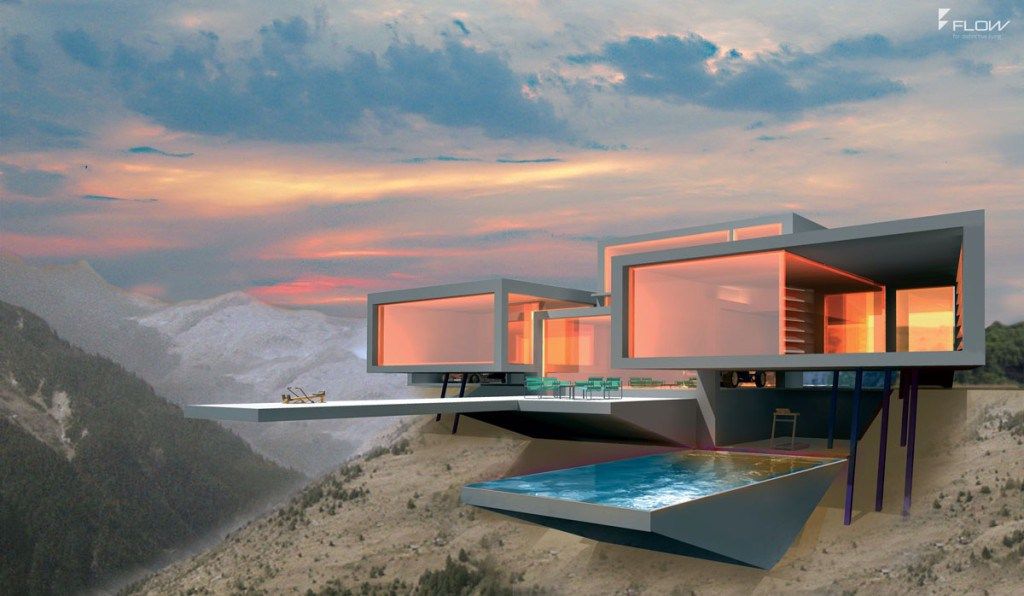
Private jets are also an unaffordable luxury. Among several "homes of the future" during the 1950s and 1960s were hangars or even landing pads, anticipating the spread of personal flying vehicles. Everyone assumed that the cost of private jets would fall, and the public didn't care about the price of fuel or the difficulty of building "sky highways" across the country. Now think about a flying house. Try to imagine an ordinary house, only in the sky. We don't live in Oz. How will he take off? How much money will it take to “refuel” it? We haven't even come close to being realistic.
The closest thing to a flying home today is a luxury private jet. Inside are huge soft seats and comfortable beds, wooden furniture, bathrooms and kitchens. Some chefs even have their own bath. On airplanes. Unfortunately, the price tag of such a “house” eloquently hints at your well-being.
Plastic house
This is another memory of the "House of the Future", which we wrote about above.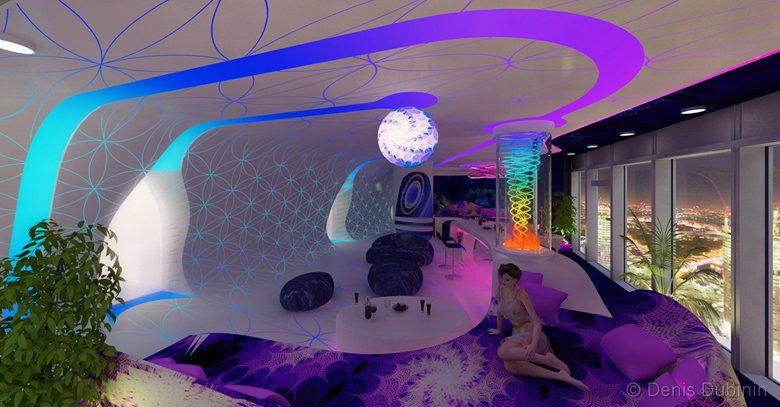 Yes, about the one that was at the nuclear reactor. This house proudly declared that it was made entirely of plastic and other man-made materials. Floors, furniture - everything is made of plastic. Monsanto was the leader in plastics at the time. This material was very cheap and very easy to make even at 1950s. Lightweight, comfortable, durable, in different shapes, textures and colors - why not an amazing clay for everything you want to mold? No cockroaches, easy to clean, the decomposition period will not let the house crumble.
Yes, about the one that was at the nuclear reactor. This house proudly declared that it was made entirely of plastic and other man-made materials. Floors, furniture - everything is made of plastic. Monsanto was the leader in plastics at the time. This material was very cheap and very easy to make even at 1950s. Lightweight, comfortable, durable, in different shapes, textures and colors - why not an amazing clay for everything you want to mold? No cockroaches, easy to clean, the decomposition period will not let the house crumble.
Plastic is ubiquitous. But do any of you live in a plastic house? Habit is our second nature, and although we love new technologies, it is not at all necessary to try on all their derivatives at once. People prefer comfortable materials when they build their own housing, wood and fabric, no cold gloss.
Of course, many modern materials are based on plastic - and at home they even print on a printer - but they are far from the shiny gloss of plastic of the 50s.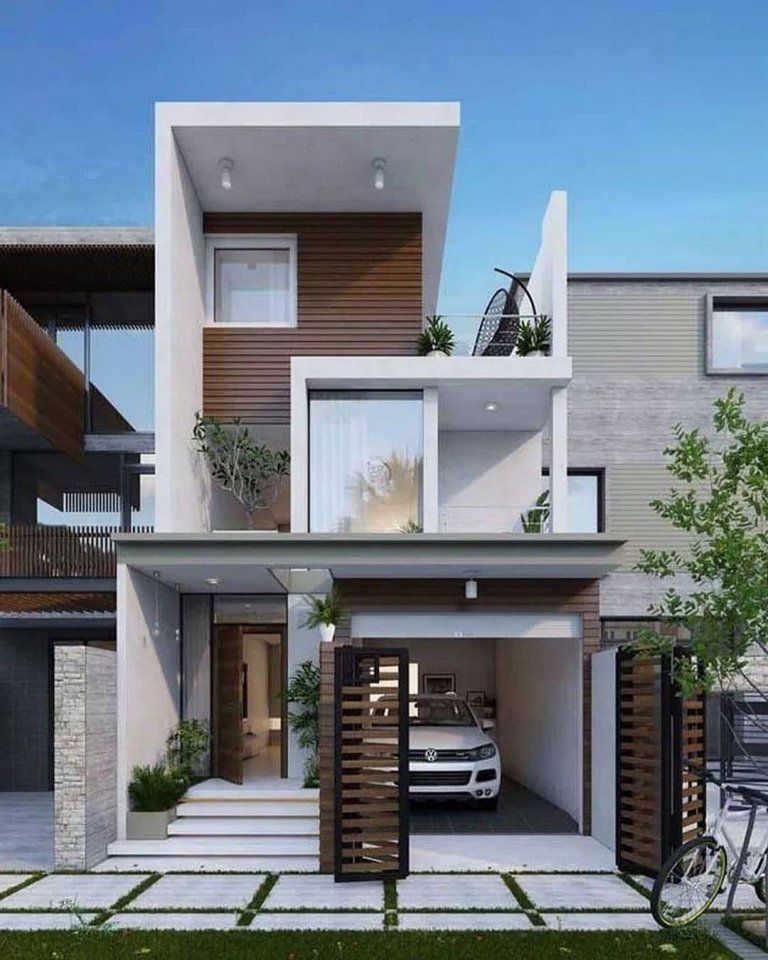
Buttons, buttons, buttons
Houses of the future, which were created as projects in the 50s and 60s, were fond of kitchen equipment. It was on this training ground for housewives that designers and engineers could fully reveal their talents - after all, bedrooms and living rooms were similar for the most part. The kitchens in the "houses of the future" didn't even look like kitchens - they looked like empty rooms with lots of paneling on the walls and ceiling.
Press the button and the kitchen will get colder - this would save perishable food. Another button would open the microwave oven (which had plans to completely replace the oven). The third would turn the plates over, opening the sink and other useful places. The entire kitchen was hidden in itself so that the housewife was not in the way of unnecessary appliances, and she could open only those panels that would be needed when preparing the menu for today. Cool, right?
Nobody thought about practicality.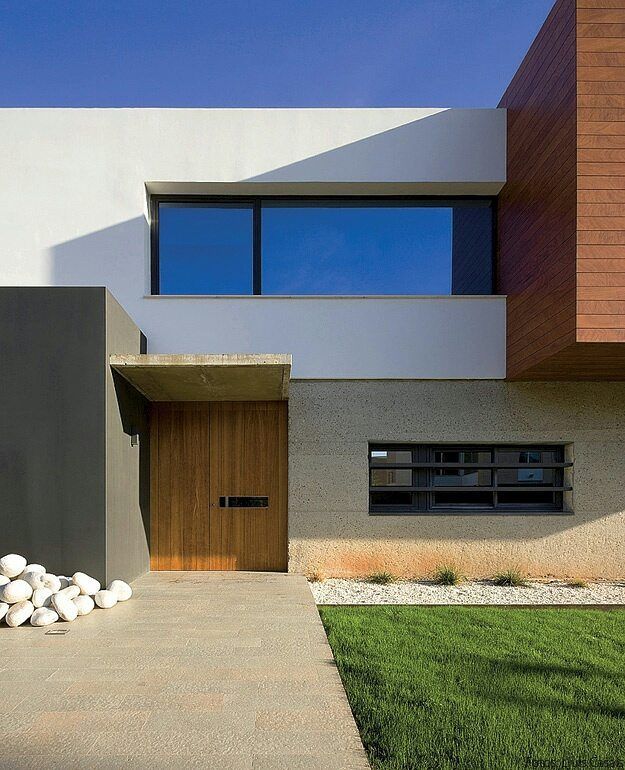 All moving elements require energy, attention (if they break) and constant connection. You go to the kitchen to drink a glass of water, but the "cupboard" will break and will not let you finish what you started. In any case, all modern kitchens are full of useful appliances that are easily built into furniture and do not require changing the format of the room as such.
All moving elements require energy, attention (if they break) and constant connection. You go to the kitchen to drink a glass of water, but the "cupboard" will break and will not let you finish what you started. In any case, all modern kitchens are full of useful appliances that are easily built into furniture and do not require changing the format of the room as such.
Space food
Freeze-dry, freeze-dried coffee technology, well known in the food industry, has been around for centuries. The indigenous people of Peru lay potatoes out in the cold, freeze them, and then let them dry in intense sunlight. This ingenious method works great for other products as well. During World War II, "freeze-drying" was used to transport medicines like serum that needed constant refrigeration. When dry food is frozen and then dried in a vacuum, you get flakes, porous and light cubes and balls. Then you add water or milk and you get a treat. The problem is that dehydrated food tastes very different from the original.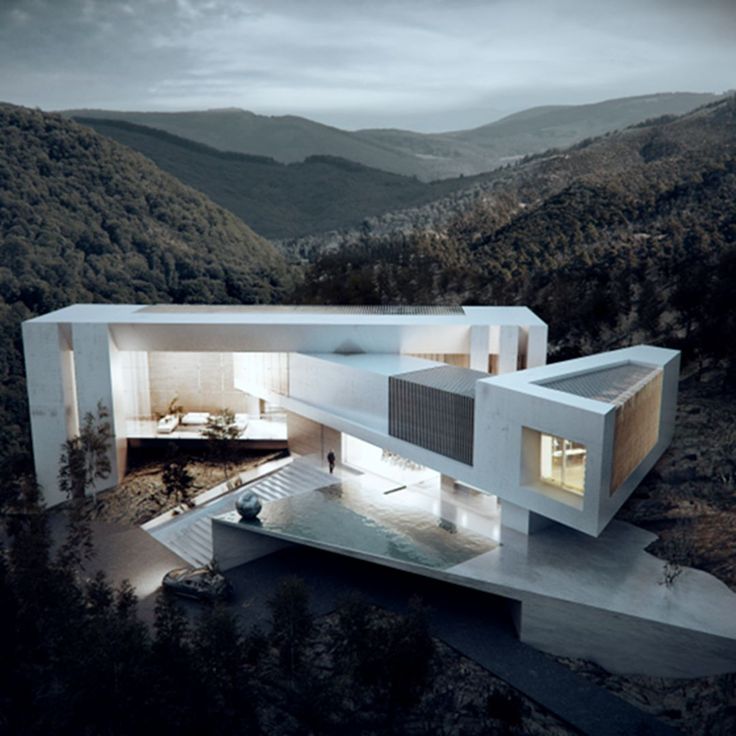
This method is used to supply food to astronauts and cosmonauts in orbit. They also eat condensed food and mashed tubes, like the kind people use to get toothpaste out of. We were so inspired by space flights that we wanted to join the astronauts by eating their food. Many kitchens of the future included home freeze-drying projects. The same instant coffee is done. But such food did not take root. Nobody wanted to eat toothpaste.
Videophones
And then you thought: “Wait a minute… I have a videophone: Skype or FaceTime, smartphone, webcam…”. You're right. But we're talking about videophones that could replace the voice phones that are now thriving. You can skype someone who is far away from you, but you are unlikely to order pizza late at night using this service. And even more so, the pizza operator is unlikely to want to see you.
A French illustrator named Villemart drew an "epistolary movie" at 1910, which showed an image of a person projected onto a wall.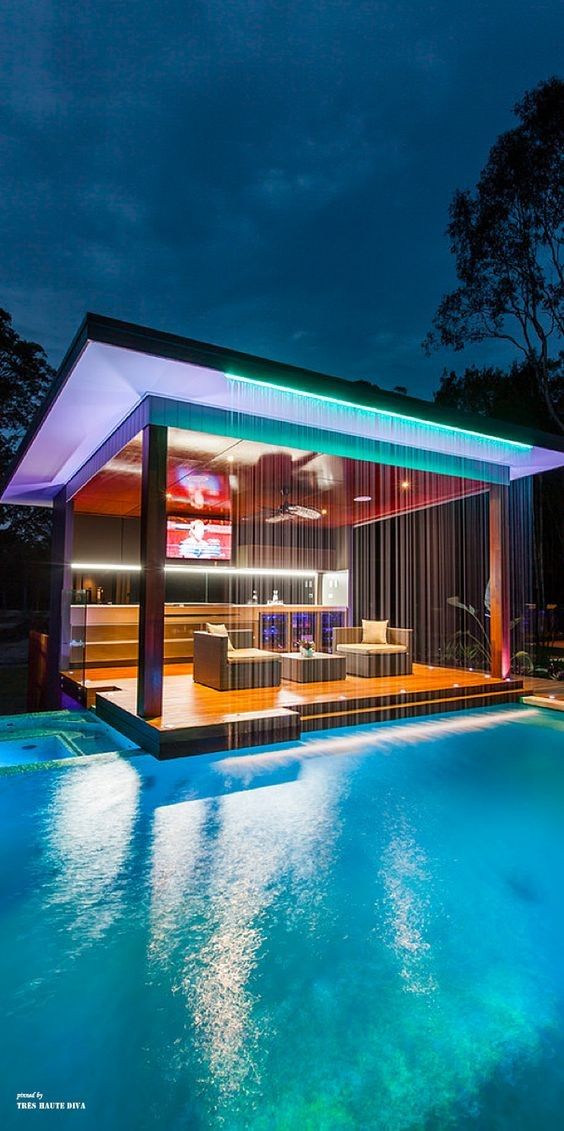 It turns out that they started talking about videophones earlier than about TVs.
It turns out that they started talking about videophones earlier than about TVs.
For the most part, early videophones broadcast photos from a normal phone call rather than live video. In 1936, the first videophone system appeared between the German cities of Berlin and Leipzig. After that, in the 1960s, AT&T demonstrated a videophone called the Picturephone at the Disneyland fair. At 1964 AT&T even installed a couple of Picturephones in the country, but they proved expensive and unpopular.
Although today video calls cost a penny and computer-assisted video telephony is gaining popularity, we still prefer voice communication. Perhaps we are too lazy to comb our hair and look better with every call. Perhaps we prefer to talk face-to-face with the interlocutor, and not with his digital copy. Videophones would be great for the deaf, but as long as we don't have wall-sized televisions, they're useless.
Domestic robots
Today you can buy a robot that will mow your floors or mow your lawn, even wash your socks, but that's about it.